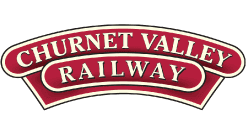Since April 2011, the Churnet Valley’s only (current) wagon restoration has been slowly progressing in Cheddleton yard. It is ballast plough brakevan No DB993707, which was built in 1951 by British Railways with the dual purpose of providing braking for freight trains and also for spreading evenly newly laid ballast between the rails during track replacement exercises. The railway currently has four brakevans but for many years only one has been fit for traffic. DB993707 is privately owned and funded but will be available as a second brakevan when completed, making it possible to operate freight trains with a brakevan on each end, and also enable the current operational example to receive any future repair work.
The restoration project for DB993707 has so far taken 18 months and visual progress is already evident. The project was split into two phases to make it easier to manage for volunteers. Between April & December 2011, “phase 1” of the restoration was completed. This involved the complete stripping of the wooden body (comprised of a large timber framework clad with pine planking, much like a garden shed on a bigger scale) and the floor at the north end of the vehicle. The centre section of the vehicle (the enclosed “cabin” where the guard is accommodated) was also stripped of its planking, but the framework underneath and the floor were in good enough condition to retain, as was the roof of the vehicle. All of the wood listed above was completely replaced with new, oak for the framework and pine for the planking. This all was machined to size using the CVR’s carriage & wagon workshop facilities (introduced in 2004) and fitted to the vehicle, followed by some sanding/filling and finished with two coats of paint. The roof was also repaired and repainted, during a two week spell inside Cheddleton engine shed in late 2011. Whilst all this was going on, a myriad of metal fittings, such as handrails and the equipment which raises the plough up & down (it looks like a ship’s wheel!) were cleaned back to bare metal and repainted to return them to their former glory.
2012 has seen the same process begin again, this time for the south end of the vehicle (“phase 2”), which should see the woodwork concluded. So far the rotten wood has been stripped, and the project is currently waiting for human resources to become available in carriage & wagon so the machining of the new timber can commence.
Below the body, the chassis was found to be in remarkably good condition. No major engineering work is required to return the vehicle to service, with only a minor problem with one of the axleboxes to rectify and a thorough inspection. So far, the entire chassis has been manually cleaned back to bare metal and painted in anti-rust primer, a very long and thorough process which has literally taken a few months. Approximately 1/3rd of the chassis has also been finished in black gloss, and what a difference that makes. It was doubtful that the darkest corners of the chassis had seen any attention since being built 61 years ago.
Whilst the south end woodwork is on hold, work is concentrating on the interior of the central cabin, and making it weather tight is a current aim. This also makes sense given the current time of year. This work will involve the replacement of eight windows in the ends plus another four windows in the lookout duckets. Work can then proceed on repairing the damaged interior and giving the area a general strip down and full repaint, as well as returning the (missing) guard’s stove of course!
So progress continues to be made on this small part of the CVR’s rolling stock collection. 2013 will hopefully see the south end woodwork rebuilt to the same standard as the north end, the cabin interior completed, and the chassis repaint completed and running gear inspected for regular use. The vehicle will then be painted again, lettered and varnished before joining the operational fleet. It is to carry the short-lived “Gulf Red” livery, a maroon colour scheme applied to engineering stock in the early 1960’s but which quickly found to be unfavourable with BR and therefore was replaced very quickly. For any purists out there, DB993707 was one of the few brakevans to indeed carry this livery in its BR life! Whilst it is tentatively intended to complete the vehicle in 2013, it will unfortunately not be ready in time for the planned freight trains during the steam gala in February.
